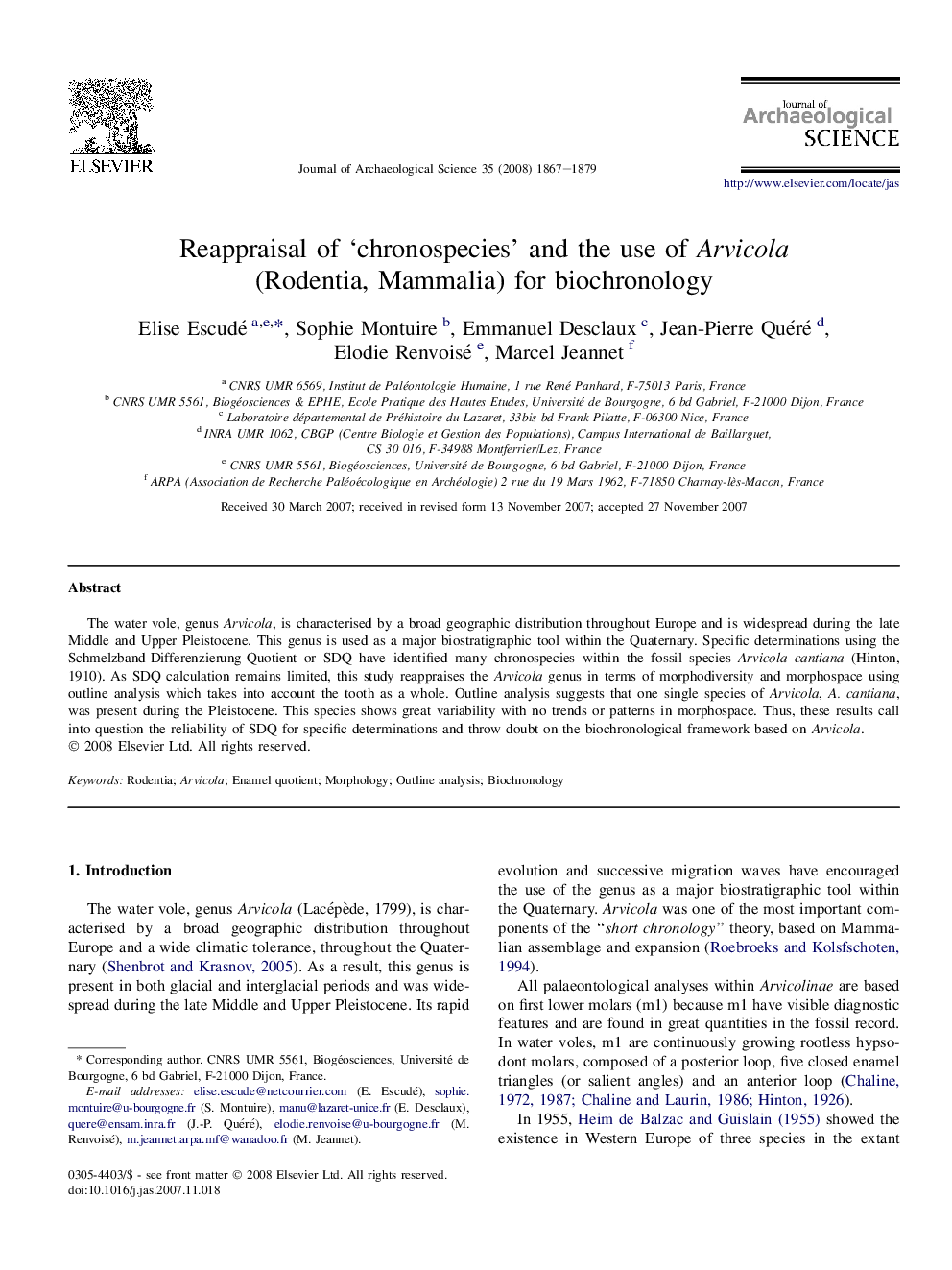| Article ID | Journal | Published Year | Pages | File Type |
|---|---|---|---|---|
| 1037254 | Journal of Archaeological Science | 2008 | 13 Pages |
The water vole, genus Arvicola, is characterised by a broad geographic distribution throughout Europe and is widespread during the late Middle and Upper Pleistocene. This genus is used as a major biostratigraphic tool within the Quaternary. Specific determinations using the Schmelzband-Differenzierung-Quotient or SDQ have identified many chronospecies within the fossil species Arvicola cantiana (Hinton, 1910). As SDQ calculation remains limited, this study reappraises the Arvicola genus in terms of morphodiversity and morphospace using outline analysis which takes into account the tooth as a whole. Outline analysis suggests that one single species of Arvicola, A. cantiana, was present during the Pleistocene. This species shows great variability with no trends or patterns in morphospace. Thus, these results call into question the reliability of SDQ for specific determinations and throw doubt on the biochronological framework based on Arvicola.
